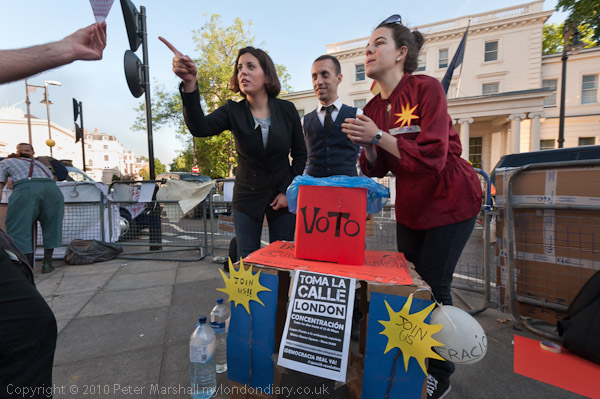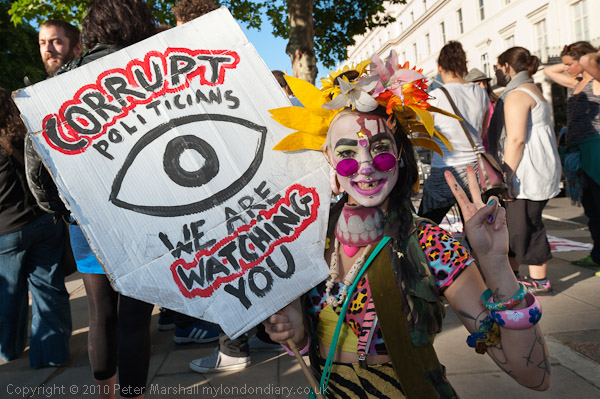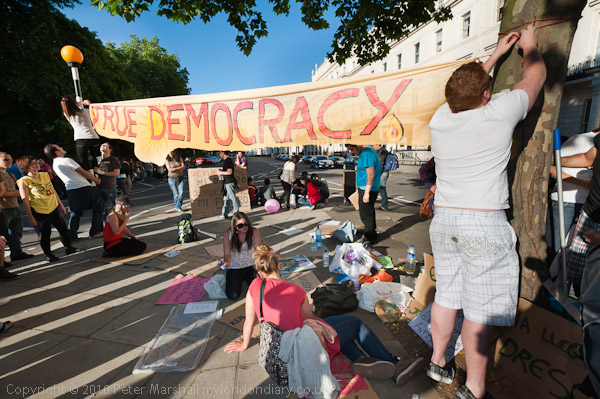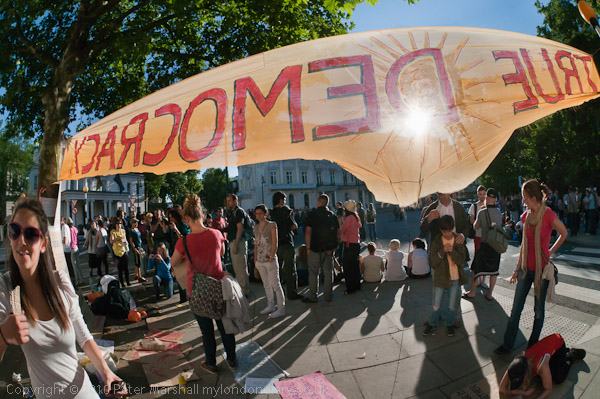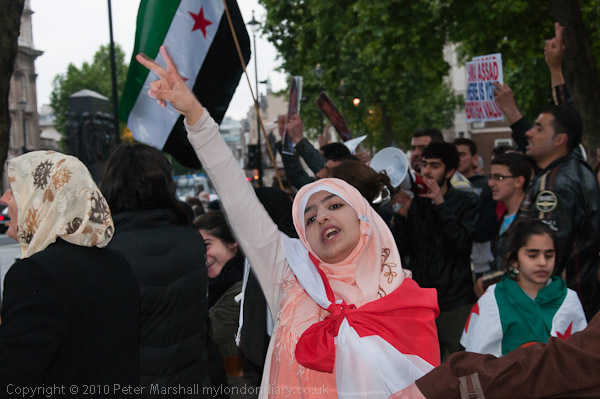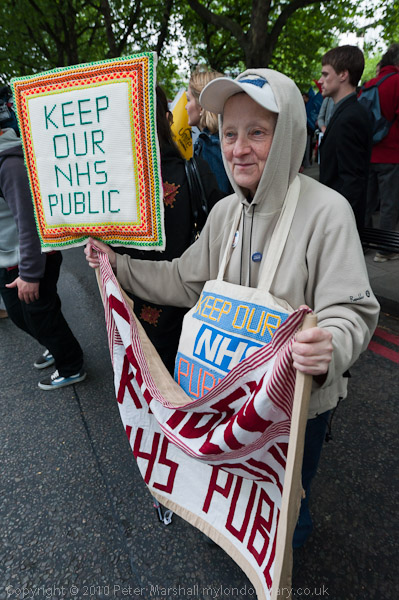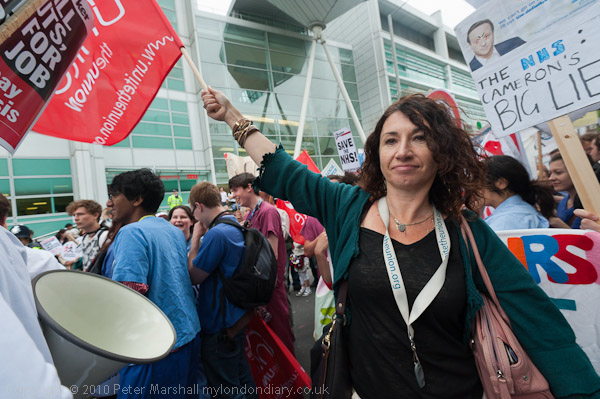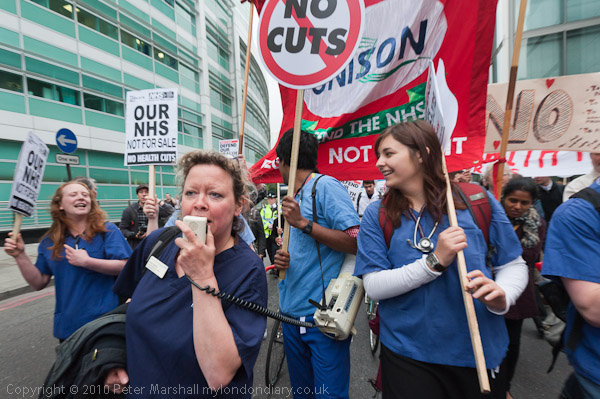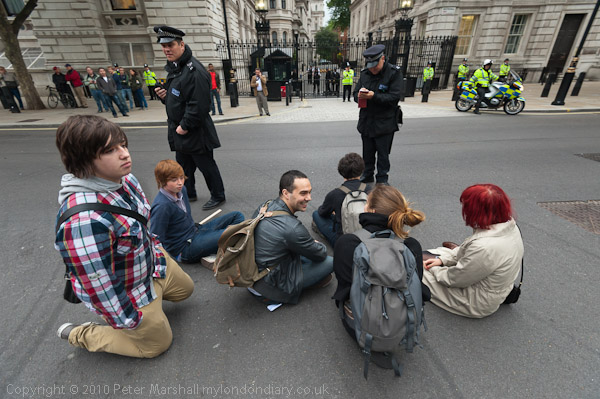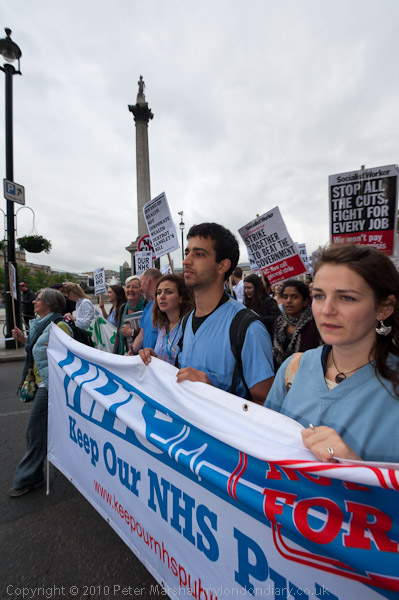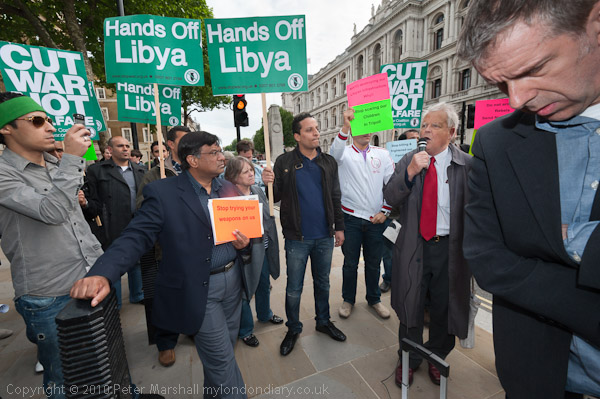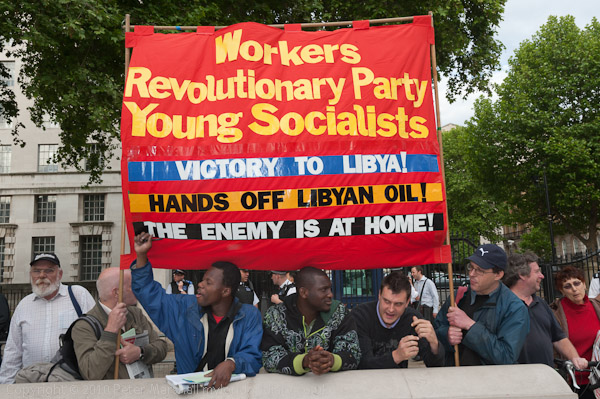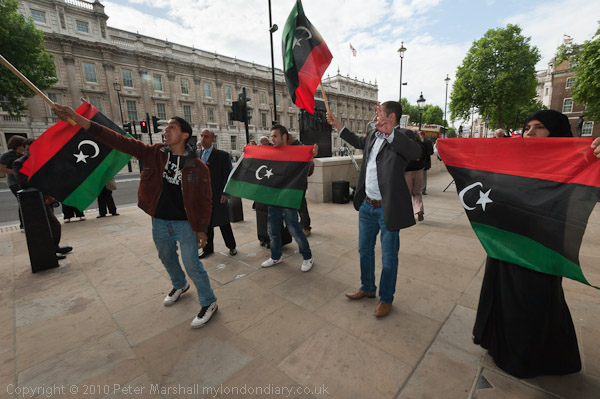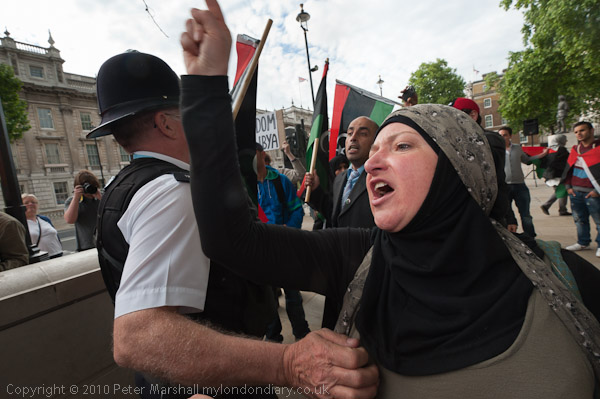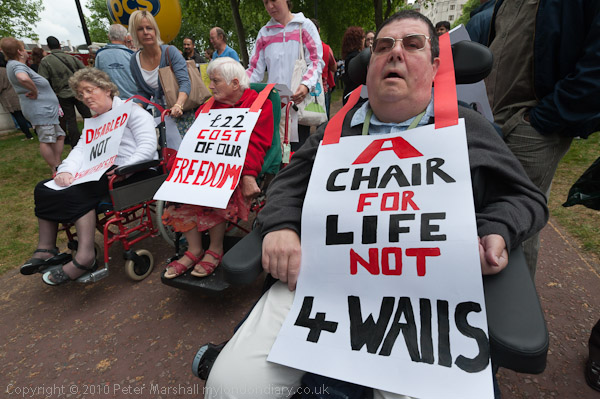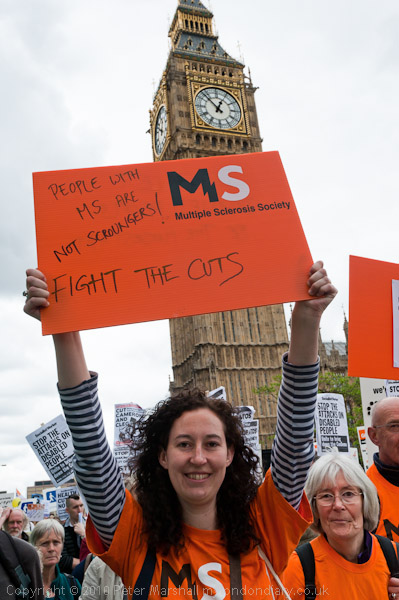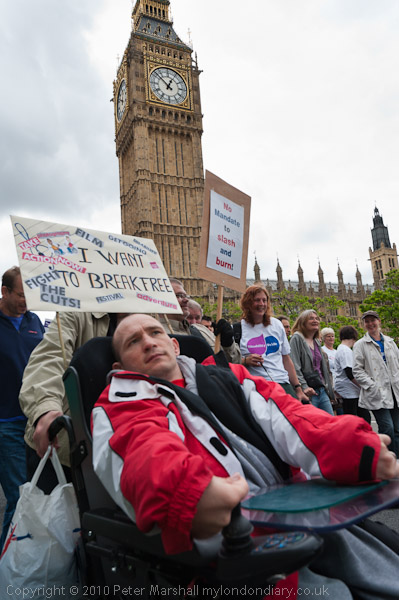If you are a Colombian, what you think of Álvaro Uribe Vélez, president of Colombia from 2002 to 2010, may depend very much on how his policies affected you personally. Many, particularly among the middle class and wealthy extremes of Colombian society have prospered from his polices, while more than 2.5 million poor farmers and others have lost their land, and around 1,400 indigenous people and more than 500 trade unionists have been murdered by paramilitary groups and others encouraged by his government.
For those taking part in this protest, there were no doubts. Uribe was a murderer, a man with blood on his hands, and halfway through the protest, many of them covered their hands in red paint as a symbol of this.
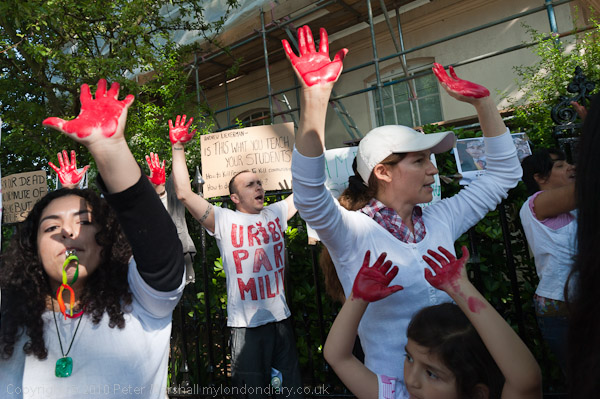
I tried hard, but somehow I wasn’t quite happy with any of the pictures I had taken to show this. Everything was just a little too disorganised, and the few closer images also lacked any real impact, just losing the connection with the event.

Perhaps this was the best of the tighter images, but the fairly low (and very uneven) light doesn’t help, and I would have liked the skulls at left to be sharper.
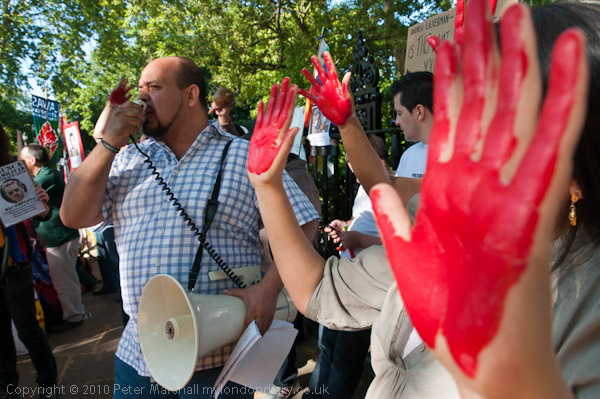
I tried getting close to a hand and using it out of focus in the foreground, and although it isn’t a bad image, it didn’t really stand out. My favourite picture with the red hands – and there are rather a lot to chose from in Picket Against Former Colombian President is probably one of the several young girls at the event, but it really is just a picture of her with a recorder and a red hand, and doesn’t for me fit the mood of the event.
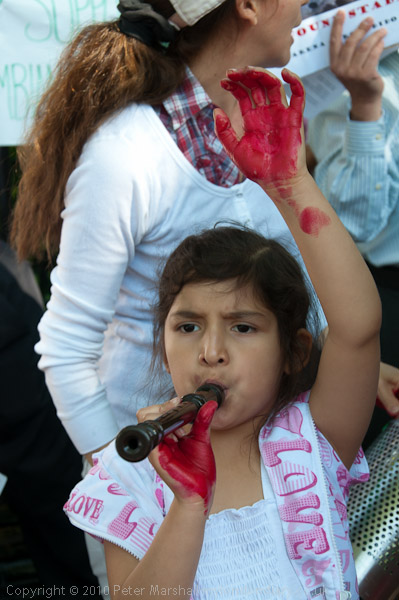
Or perhaps this one below, again more of a portrait, but the pattern of hands intrigued me, including one on the sign at right.
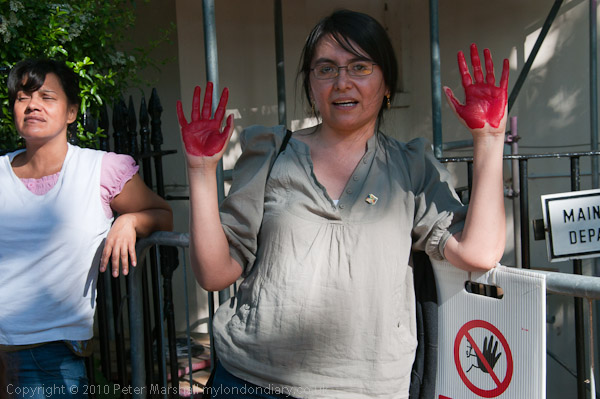
Again the mood of the image perhaps doesn’t really fit the demonstration, and you can see very clearly the lighting problems, with shadow and bright sun. Fortunately working with RAW format it was possible to keep the white vest of the woman at right in bright sun while also keeping the shadow tones at a reasonable level, although quite extensive use of Lightroom’s local dodging and burning and highlight control was needed. While taking the picture I was also thinking that ‘main’ (at right) means hand in French. Just a pity they speak Spanish in Colombia.
When I posted my pictures with some text on Demotix, I wasn’t at all surprised to see a comment quickly added by someone who appears to be a Colombian, praising Uribe as the best President Colombia ever had and labelling all those who oppose him as supporters of the FARC guerillas. This isn’t of course true; some at least of those present are simply human rights activists. Even if Uribe did ‘make the trains run on time’ for Colombia, that can’t justify the means.
